Fairytale Rome: Villa Torlonia & Coppedè District
Rome’s multifaceted beauty unfolds in a variety of neighborhoods, each one with its distinctive character. Today, we’ll explore the Nomentano district, located in the northern section of the city.
Via Nomentana is one of the major roads built back in the days of the Romans, and over the centuries has seen the armies of various would-be conquerors attacking the city: both Hannibal, the famous general from Carthago, and Vitige, the King of the Ostrogoths, tried to enter Rome from Via Nomentana. Nowadays, the avenue presents itself lined with shady trees, and is surrounded by an upper-market residential district going back mostly to the early 1900’s, when lots of graceful Art Nouveau style cottages where built.
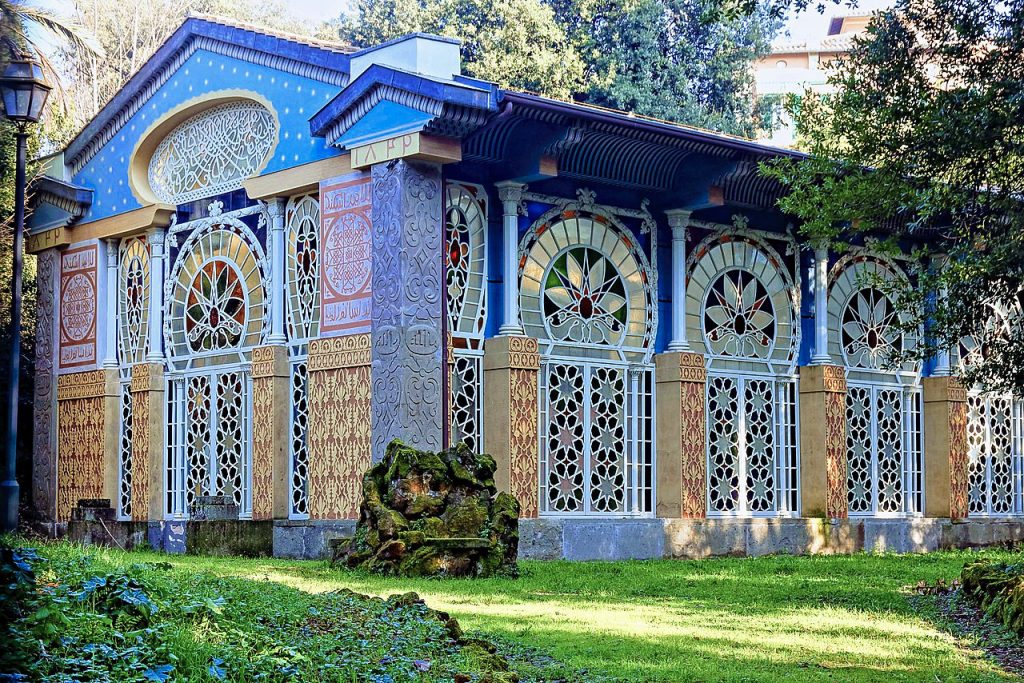
The area developed after Rome had become the capital of Italy in 1871, when the population boomed; and actually, where the street meets the ancient city walls, which are amazingly well preserved, we can still see Porta Pia, the city gate where Garibaldi’s “bersaglieri” managed to break down the walls on September 20th 1870, on the day the army of the new-born kingdom of Italy put an end to the Church-state run by the Pope.
A short distance from the city walls, we find Villa Torlonia, once owned by the wealthiest man in Italy, Alessandro Torlonia, who in the 1800’s built a fortune opening a bank that would give loans to Rome’s aristocratic families, accepting their land and properties as collaterals.
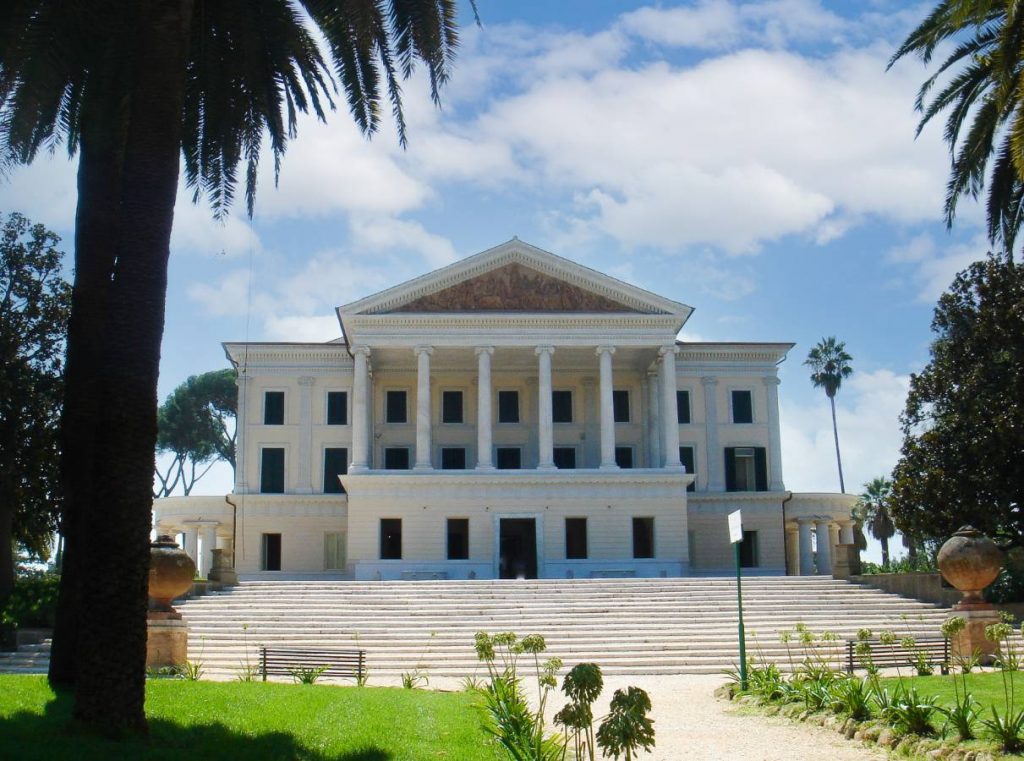
This way, the Torlonia family came to own immense expanses of land around Rome and in the Abruzzi region: they owned some amazing palaces around the city, as well as most of the land alongside the Ancient Appian Way, where they undertook several archeological excavations. Over time, they put together an incredible collection (the largest privately owned collection of antiquities in the world!), which has been displayed for the first time in 2020 at the Capitoline Museums (see my article about the Torlonia Marbles).
Villa Torlonia is now owned by the city council, and is a public park full of palm trees, a bamboo grove and even 2 obelisks! These granite needles decorated with fake hieroglyphs were erected in the gardens by Alessandro Torlonia in honor of his parents.
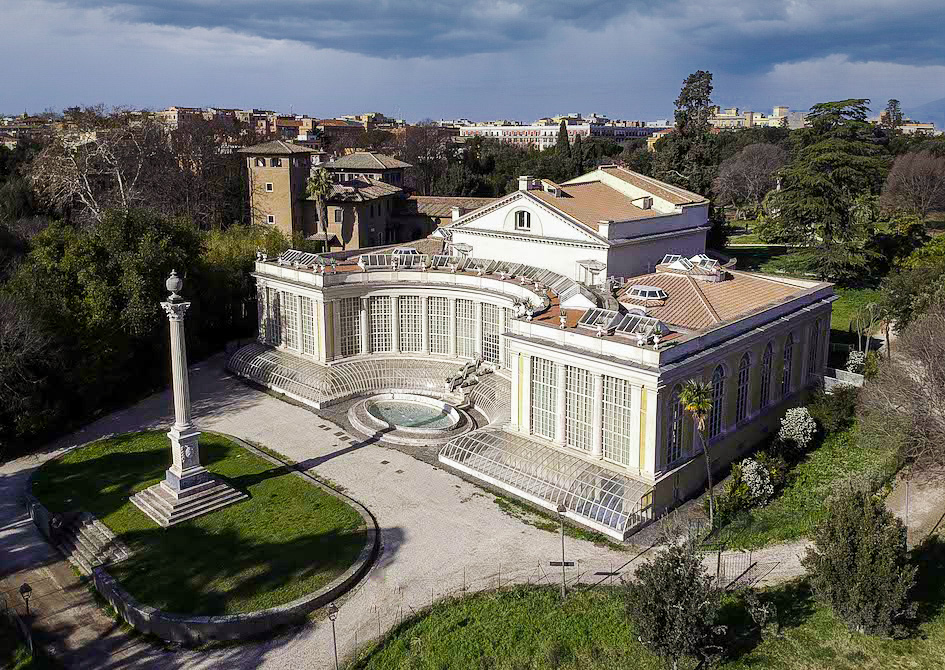
The main building, known as the Casino Nobile, was meant to show off the immense wealth of its owner. It is truly dazzling: ceilings decorated with intricate stucco work that looks like lace, frescoes, marble decorations, gold leaf and mosaics.
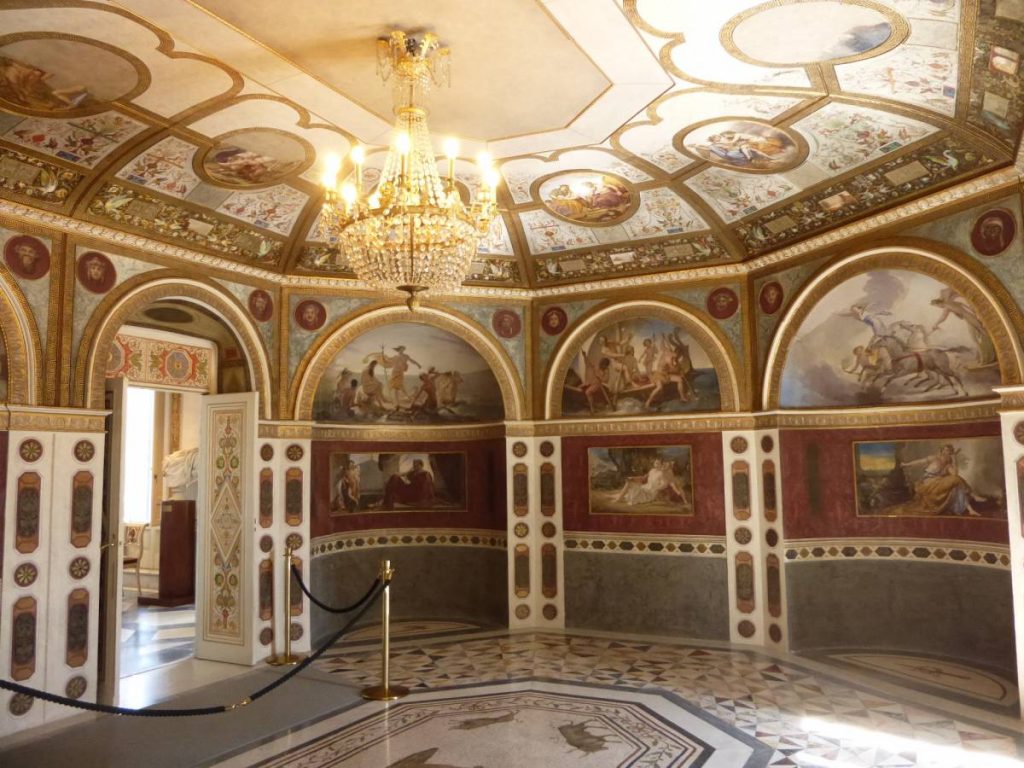
No wonder Villa Torlonia was choosen as his residence by Benito Mussolini, head of the Fascist Party and Italian Prime Minister in the 1920’s to 1940’s. This is actually where Mussolini was arrested after he got outvoted by the new government in 1943.
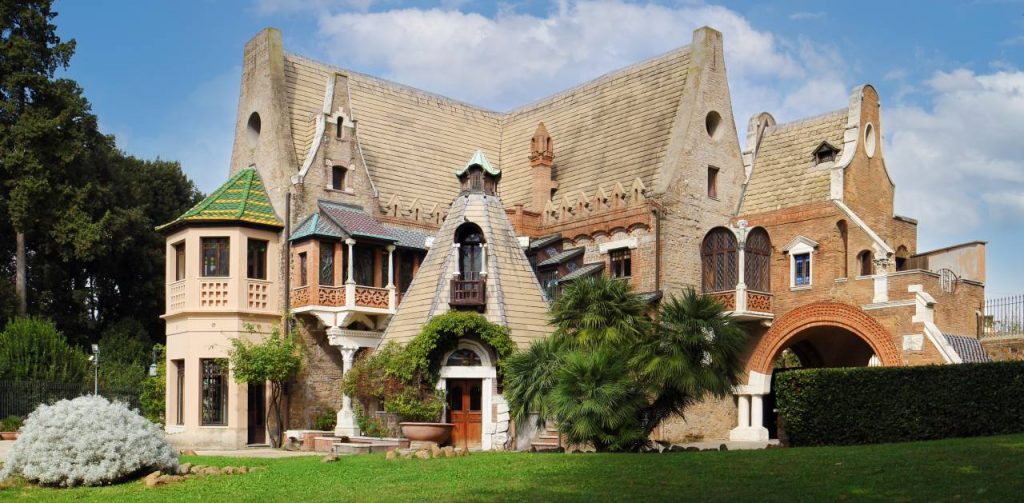
But the park offers another stunning surprise: a fancy Swiss cottage turned into a fairytale building glittering with stained glass and colorful ceramic rooftiles. It is known as the House of the Owls, because among the many small animals featured in its decorations, the owls are the most noticeable ones. The building has been beautifully restored, and houses a museum dedicated to stained glass. Inside, you can admire the artistic windows created by the workshop of Cesare Picchiarini from 1910 to 1920, designed by some of the most notable artists of the Art Nouveau style (Duilio Cambellotti, Paolo Paschetto, Umberto Bottazzi just to name a few).
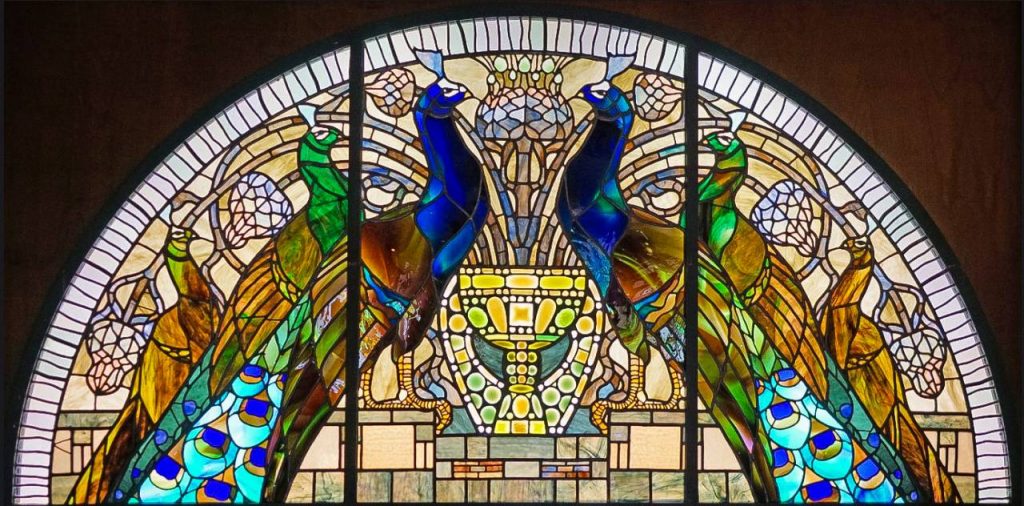
A leisurely stroll along the beautiful streets of the neighborhood will take us to a real gem the Eternal City offers to its visitors: the dreamy Coppedè District.
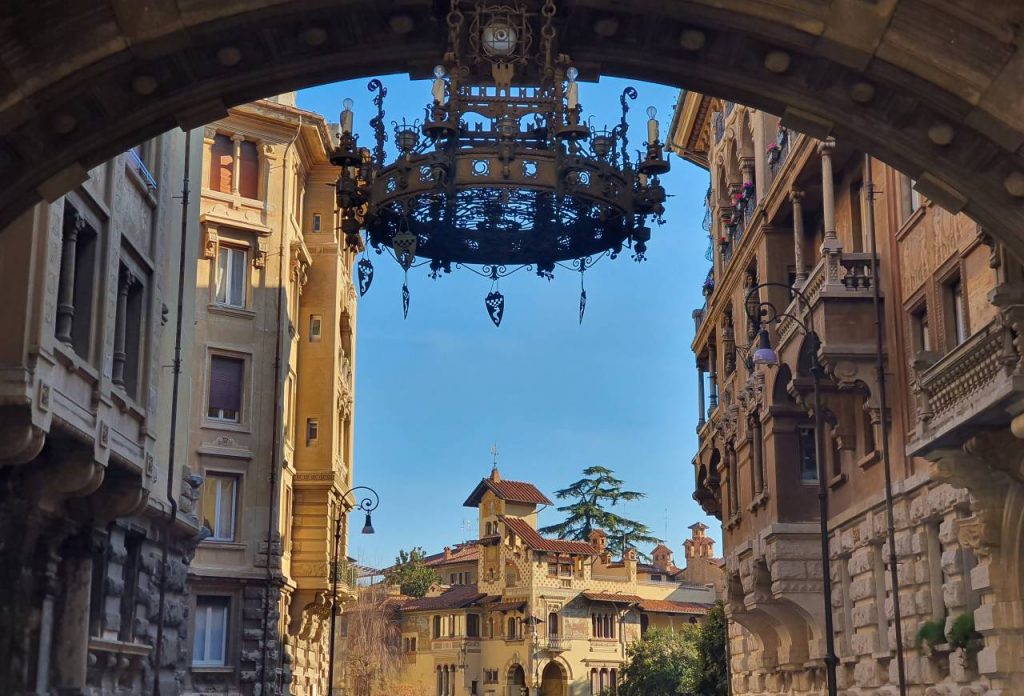
Gino Coppedè was an architect, a native of Tuscany, who in the years between 1904 and 1927 was active all over Italy, creating some of the most unexpected and imaginative buildings to be seen in the country. His style is truly unique, even though it originated from the European Art Nouveau Style and the English Arts and Crafts movement.
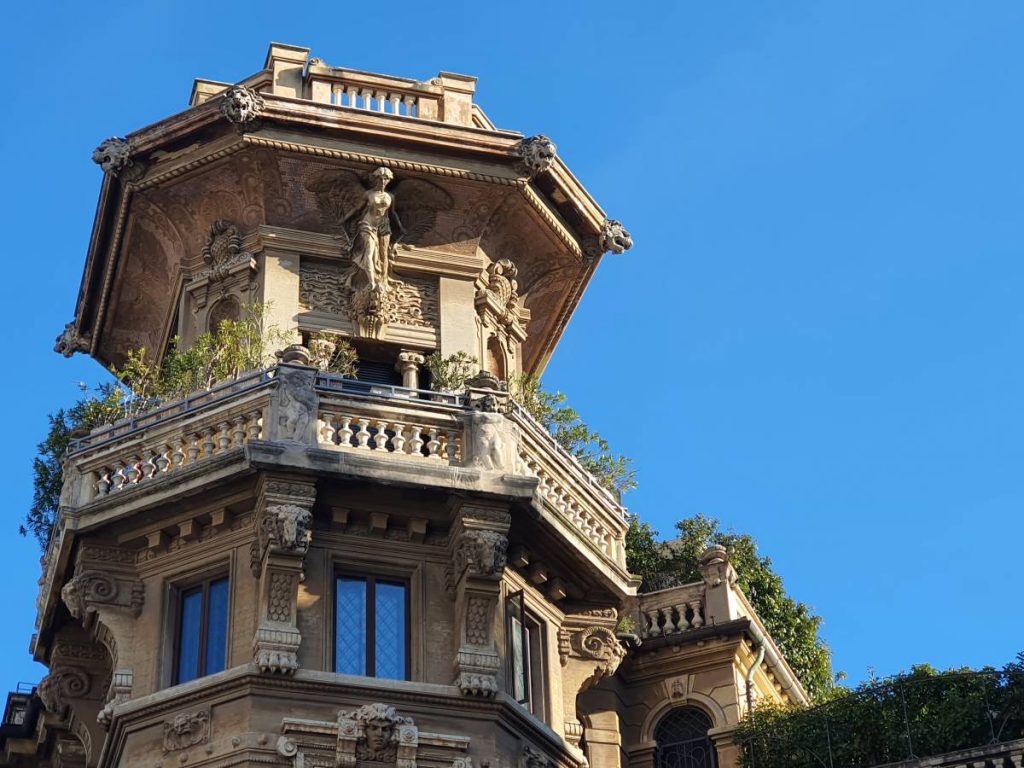
No wonder the Coppedè District has been the set for many movies: it seems completely detached from the real world, with apartment buildings literally covered with carvings, reminiscent of medieval castles, renaissance palaces and baroque churches all mixed together. Colorful frescoes decorate the façades, perky chimneys sprout from the roofs, and towers, loggias and sweeping terraces confer the buildings an unmissable charm.
The Fountain of the Frogs in the centre of the square which is the heart of the district is a flight of imagination that combines funny decor and modern day materials: it’s all cement, even though it imitates the marble most Roman fountains are made of.
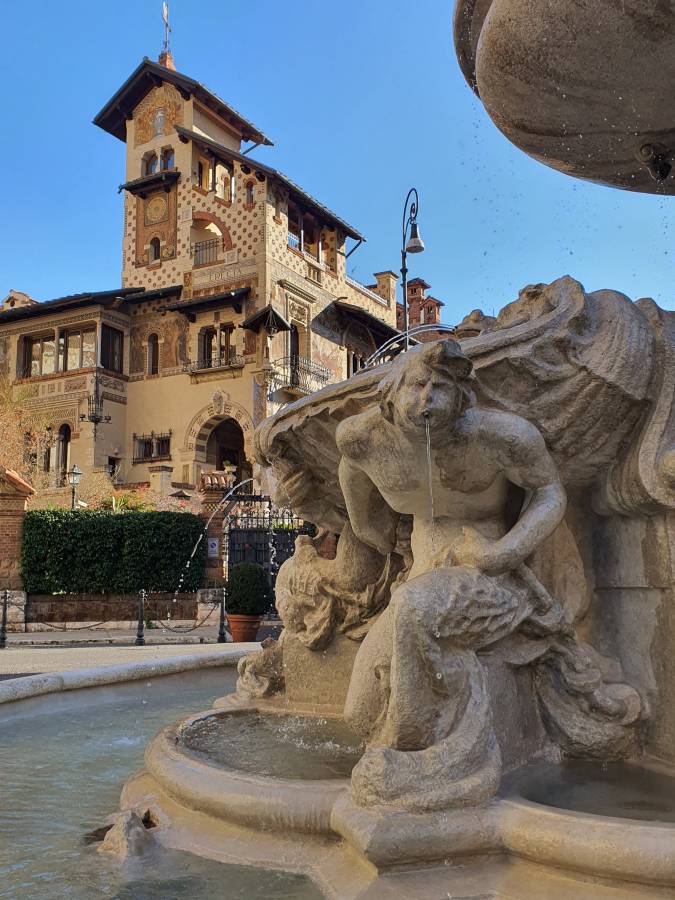
Walking along the quiet, tree-lined streets, we can see a number of wonderful villas designed by Coppedè: the Villini delle Fate (the Fairies’ Cottages), the Villa once owned by the famous opera-singer Beniamino Gigli, as well as the Embassies of Morocco, Congo and South Africa.
Rome never ceases to amaze us with the richness and variety of the sights it has to offer. Every time you’ll take one of my Neighborhood Walks, you will realize how what is considered a “minor site” in Rome, in any other part of the world would be the reason for your trip. That’s why you should not miss exploring the city beyond the “must-sees”, to make it truly yours and become a bit “Roman” yourself!
























